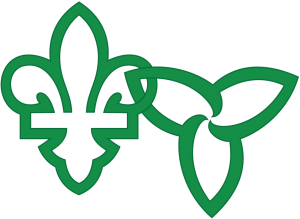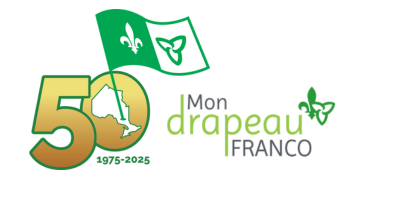Visit the monuments to la francophonie


Centre franco-ontarien de ressources pédagogiques (CFORP)
Monument location:
Centre franco-ontarien de ressources pédagogiques (CFORP)
435 Donald Street
Ottawa, Ontario K1K 3M7
Unveiled: September 5, 2007
Bernard Grandmaître, Honorary President of Monuments de la francophonie d’Ottawa
Jean-Luc Bernard, President of the Centre franco-ontarien de ressources pédagogiques (CFORP)
This project was carried out by District 1 of Richelieu International.
The Richelieu Society was founded in Ottawa in 1944. It was renamed the Richelieu International in 1955 and incorporated 275 service clubs in seven districts and in a dozen francophone countries. The Society promotes la Francophonie and francophone culture through sociocultural and humanitarian efforts and youth involvement. District 1 has 20 clubs that cover Ottawa, Outaouais and eastern Ontario.
Founded in 1974, the Centre franco-ontarien de ressources pédagogiques (CFORP) is dedicated to French-language education in Ontario and in Canada. CFORP is a multiservice centre that offers resources and services including educational materials, online learning, training and access to the Librairie du Centre in order to support schools, school boards, organizations and the general public.
The Franco-Ontarian flag
The Franco-Ontarian flag was created in 1975. It consists of two sections; the left section features a white fleur-de-lys (representing la Francophonie) on a green background, and the right section features a green trillium flower (representing Ontario) on a white background. The flag was recognized as an official symbol of Ontario by the Ontario Government in 2001.
The francophone community and its achievements
Francophones have been living in the Outaouais Valley region for more than 400 years. This area has been important ever since the founding of Wrightstown (now Gatineau) in 1800 and Bytown (now Ottawa) in 1826. Many French-speaking people came to the region from Québec to work in forestry or construction (especially when the Rideau Canal was being built from 1825 to 1832).Ottawa quickly went from a small industrial town to the capital city of a new country. Francophones began leaving their mark on history: in the nineteenth century, they founded the first bilingual school (1845), a general hospital (1848), the first college (1848) that would eventually become the University of Ottawa, parishes, schools and residential schools. French culture and the language have been preserved by various organizations, including the Institut canadien-francais, the Société Saint-Jean-Baptiste, the ACFO of Ottawa, the newspaper Le Droit, various Richelieu clubs, the Festival franco-ontarien and the Nouvelle Scène Gilles Desjardins. Franco-Ontarians established the first French-language public secondary schools in 1968, and achieved full funding for Catholic schools in 1984 and self-governance of their school boards in 1998. La Cité was founded in 1990.
Francophone youth
There have been many youth groups and movements in Ottawa over the years, including the Association catholique de la jeunesse canadienne (ACJC), the French-language scouts program (the 1re Notre-Dame troop) and its various branches (cubs, scouts, pioneers, brownies and guides), the Jeunesse Étudiante Catholique (JEC), the Jeunesse Ouvrière Catholique (JOC), the youth divisions of the Société Saint-Jean-Baptiste, the Association de la jeunesse franco-ontarienne (AJFO), the Association provinciale des mouvements de jeunesse de l’Ontario français (APMJOF), Direction-Jeunesse (DJ) and the Fédération de la jeunesse franco-ontarienne (FESFO).
The Jeux franco-ontariens [Franco-Ontarian Games] were created in 1994 and are the largest annual gathering of Franco-Ontarian youth. Every May, hundreds of high school students gather from all across Ontario. There are also various sports tournaments for francophone youth such as the Tournoi franco-ontarien de soccer. Francophone youth regularly volunteer at the annual Franco-Ontarian festival and participate in the Orchestre symphonique des jeunes de l’Ontario français (OSJOF). Francophone youth were also heavily involved in the SOS Montfort movement.
Women’s movements
Women’s groups fought to change the role of women in Canadian society in the 20th century. The campaigned for equal pay, the right to vote (the suffragette movement), temperance, paid maternity leave, promotion according to the same criteria that were applied to men, the elimination of harassment and exploitation, and the end of poverty and immorality. Francophone women began forming organizations around the time of the First World War. These organizations included the Fédération des femmes canadiennes-françaises (1914), the Union catholique des fermières de l’Ontario (1937), the mouvement des Guides catholiques franco-ontariennes (1934), the Société d’étude et de conférences (1946), the cercle des femmes journalistes de l’Outaouais (1960-1993) the Cercle des femmes (1983), the Table féministe francophone de concertation provinciale (1992) and the Réseau socio-action des femmes francophones (1989).
The elderly and retired
Elderly francophones have contributed significantly to the vitality of their community. They volunteer in the domains of health, social services, culture and leisure and they are involved in home care services and housing. They have set up various associations and have participated fully in the evolution of Franco-Ontarian society. The Fédération des aînés et des retraités francophones de l’Ontario (FARFO) was founded in Ottawa in 1977, and it represents over 16 600 elderly Franco-Ontarians. Various centres have served as meeting places to exchange ideas, provide information and offer activities for the elderly. There are several retirement homes specifically for elderly Franco-Ontarians.
